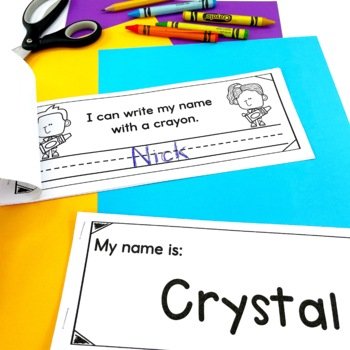Books have a strange kind of magic. They carry stories, ideas, and knowledge across centuries, yet the way we connect with them often comes down to something as small as a name scribbled inside. Writing your name on a book is one of the oldest traditions in reading culture. It marks ownership, adds personality, and sometimes even turns a simple volume into a treasured keepsake.
This guide takes you through everything you need to know about how to write your name on a book. You’ll discover the history, the reasons people do it, the many ways to add your name, placement options, personalization ideas, mistakes to avoid, and pro tips to make your books feel like yours. Whether you’re a casual reader, a student, or a collector, this article will give you all the insights you need.
Why Writing Your Name on a Book Matters
At first glance, writing your name on a book seems like a practical act just a way to say, “This belongs to me.” But it goes deeper than that.
Ownership and Security
If you’ve ever lent a book to a friend, you know the silent fear that it might never return. A clear name inside acts as a reminder and makes it far easier to get your books back.
Personalization and Identity
Books can feel generic until you put a part of yourself inside. Writing your name makes the book more personal, almost like inscribing your presence into its pages.
Gift-Giving Tradition
When you give someone a book, writing their name or yours inside transforms it from a generic object into a thoughtful gift. People often treasure the handwritten message more than the book itself.
Historical and Collector Value
Sometimes, the name inside a book adds immense value. Think about owning a novel with the signature of a famous person or a note from a grandparent decades ago. Names become history written into the margins.
Different Ways
The method you choose depends on your style, your purpose, and sometimes the type of book. Let’s look at the most popular methods.
1. Handwriting Your Name
Handwriting remains the most traditional approach.
- Style choices: cursive for elegance, block letters for clarity, playful handwriting for children’s books.
- Placement: title page, inside cover, or first blank page.
- Tips for neatness:
- Write slowly and deliberately.
- Use a smooth flowing pen.
- Practice your name before committing.
2. Using Bookplates (Ex Libris)
Bookplates are adhesive labels designed specifically to show ownership.
- What they are: Decorative stickers or cards, often with the Latin phrase Ex Libris, meaning “from the library of.”
- Why use them:
- Professional look.
- Collectors love them.
- Easy to replace if damaged.
- Customization options: Personalized with designs, family crests, or monograms.
3. Calligraphy and Decorative Styles
For those who enjoy art, calligraphy elevates the simple act of writing your name.
- Best tools: fountain pens, brush pens, dip pens.
- Ideal situations: special editions, heirlooms, or gifts.
- Tip for beginners: start with small flourishes overly complex strokes often lead to smudges.
4. Digital & Printed Labels
Technology adds new ways to personalize books.
- How to do it: Create designs on your computer and print them on adhesive paper.
- Benefits:
- Consistency across a large collection.
- Ability to add graphics, fonts, and colors.
- Creative twist: Match the design to the theme of the book (e.g., a floral label for poetry).
Where to Write
Choosing the right location is as important as the method. Placement affects aesthetics and usability.
Front Inside Cover (Traditional Choice)
- Easy to see when the book is opened.
- Works for personal collections and lending.
Title Page
- Common for author autographs, but also practical for ownership.
- Puts your name next to the book’s title, almost like you’re part of its story.
Endpapers
- These blank decorative pages at the start or end are perfect for personalization.
- They allow more space for inscriptions, quotes, or notes.
Edges of Pages (Unique and Unconventional)
- Writing or stamping along the edges of the closed pages creates a bold effect.
- Best suited for casual collections, not rare or valuable books.
Creative Ideas
Writing your name doesn’t have to be boring. Here are creative ways to make your books stand out:
- Add a favorite quote under your name.
- Include the date and place of purchase, especially for travel finds.
- Use monograms or initials for a touch of elegance.
- Add a dedication line when giving a book as a gift.
- Use stamps, wax seals, or embossing tools for extra flair.
| Personalization Method | Ideal For | Tools Needed |
| Handwritten Name | Everyday use | Pen, marker |
| Calligraphy | Special gifts, heirlooms | Fountain pen, brush pen |
| Bookplate | Collectors, large libraries | Pre-designed or custom plates |
| Printed Labels | Modern personalization | Printer, adhesive labels |
| Embossing | Premium editions | Embossing stamp |
Tips for Writing
If you want your name to look polished, follow these tips:
- Use archival quality ink that won’t smudge or fade.
- Test the pen on spare paper before writing in the book.
- Keep your handwriting small and neat so it doesn’t overpower the page.
- Practice your signature especially for books you value highly.
- Choose the right pen:
- Fountain pens for elegance.
- Gel pens for smoothness.
- Archival markers for durability.
Mistakes to Avoid
Even small errors can ruin the look or value of a book. Avoid these pitfalls:
- Using cheap pens that bleed through the paper.
- Writing in multiple random spots, which looks messy.
- Using bright, clashing ink colors.
- Adding your name in rare or collectible editions without considering long-term impact.
- Writing too large or sloppy, which distracts from the content.
Real Examples
A Student’s Library
Ali, a university student, wrote his name in every textbook using black gel pen on the inside cover. When classmates borrowed his books, they always came back his clear handwriting made ownership obvious.
A Gift That Lasted
A grandmother gave her granddaughter a children’s book, adding a handwritten note with the date inside. Decades later, that note became more valuable to the granddaughter than the book itself.
A Collector’s Mark
Book collectors often use embossed seals or personalized bookplates. One collector in London even had a custom design featuring a raven, making his library instantly recognizable.
Frequently Asked Questions
Q: Is it okay to write your name on library books?
No. Library books belong to the institution. Instead, use a removable bookmark or label.
Q: Should I use my full name or just initials?
For ownership, full names are best. For aesthetics, initials or monograms can look elegant.
Q: Does writing inside a book affect its value?
Yes. For rare editions, personal writing usually reduces value unless the signature is historically significant.
Q: Which is better, bookplates or handwriting?
Bookplates look professional and clean, while handwriting feels more personal. Many readers use both.
Final Thoughts
Learning how to write your name on a book isn’t just about marking property. It’s about making books truly yours. Whether you use elegant calligraphy, a simple handwritten note, or a decorative bookplate, the act creates a bond between you and the story inside.
A name in a book carries memories. It may remind you of when you bought it, who gave it to you, or even the journey it has taken over the years. By writing your name, you’re not just adding ink to paper you’re leaving a personal legacy.
So next time you pick up a new book, don’t hesitate. Write your name with pride, care, and creativity. After all, books may travel far, but with your name inside, they’ll always find their way back to you.



